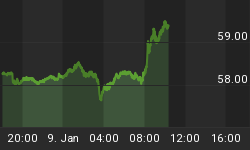Attempting to assess the U.S. economy's further outlook, one should first ponder the main causes that have been thwarting a stronger and healthier recovery, even though the Fed's monetary and fiscal policy has achieved an aggressiveness without precedent in history.
For most American economists, sufficiently easy money is of infallible efficacy. The few instances in history when record-low interest rates persistently failed to work, like recently in Japan and during the 1930s in the United States, are summarily discarded with the argument that central banks failed to act fast enough.
During the whole postwar period, it has, in fact, been typical that depressed economies promptly took off once central banks eased. Yet for us, this was never proof of the efficacy of monetary policy. Since all postwar recessions had their cause in monetary tightening, it was only natural that economies promptly jump-started when central banks loosened their brakes.
But the situation today is radically different. For the first time in the whole postwar period, the U.S. economy slumped against the backdrop of rampant money and credit growth. But if tight money or credit did not break the boom in 2000, it is hard to see how easy money can be the cure.
Identifying the true causes of the U.S. economy's poor economic performance in recent years is certainly a most important task. During 2003, leading Fed members propagated the idea that the U.S. economy was mainly suffering from an "unwelcome fall in inflation" - according to the title of a speech by Fed Governor Ben S. Bernanke, on July 23, 2003, at the University of California, San Diego. In more detail, Bernanke said that lack of pricing power was seriously impinging upon corporate profits, which in turn had strangled business capital investment.
Considering that the U.S. economy had been booming with the most rapid money and credit growth in history, this was an absurd conclusion. But several Fed members managed to exploit the temporary deflation scare they had raised, the better to implant expectations for sharply lower long-term interest rates into the markets - with the desired effect that the financial community, with its huge speculative firepower, quickly obliged with prodigious carry trade.
What, then, brought the U.S. economy down in 2000? In short, several years of unprecedented credit excess. We realize this is unthinkable for many people, yet it is a notorious historic fact that serious depressions are always preceded by extremely loose money and extraordinary credit excess. Tight money is too easily reversible to cause a deeper crisis. Ironically, it was always low inflation rates that misled central banks to excessive credit accommodation.
The two worst cases of this kind in history are, of course, the U.S. boom-bust from 1927 to the 1930s and Japan's boom-bust since 1987. In both cases, extraordinary asset bubbles played a key role in escalating credit excess. The third, and probably worst, case of a "bubble economy" is the United States for the past several years.
Credit excess thwarts economic growth even in the absence of monetary tightening, through effects ambiguously known in Austrian theory under different labels: structural maladjustments, distortions, and imbalances and dislocations.
The imbalances most often cited are a rock-bottom national savings rate of 1% of GDP, record levels of personal indebtedness, a record current account deficit, a record-high budget deficit, a record ratio of household indebtedness and an unprecedented shortfall of employment growth and labor income generation.
But there are important other imbalances that are totally ignored. One of them is the tremendous gap that has developed in the United States between virtually stagnating production of goods and soaring demand, as measured in retail sales. While the latter have been going from record to record, manufacturing production, which should deliver most of the goods sold in the shops, has been badly lagging. The soaring difference went, of course, into the soaring trade deficit.
For more than two years, the Fed has been holding its short-term rate at 1%. That is, below inflation. But instead of spurring economic growth directly, it stimulated sharply rising prices in almost all major asset classes, which in turn stimulated spending, mainly consumer spending. Rising property values and the increasing ability and willingness of homeowners to tap accumulated housing wealth became the major pillars of support both for the economy and also - given minimal personal savings - for the asset markets.
The all-important question now, of course, is whether this ultra-loose monetary policy and the associated development of asset prices have laid the foundation for a normal, self-sustaining economic recovery.
Good luck, Dr. Greenspan.
Regards,















